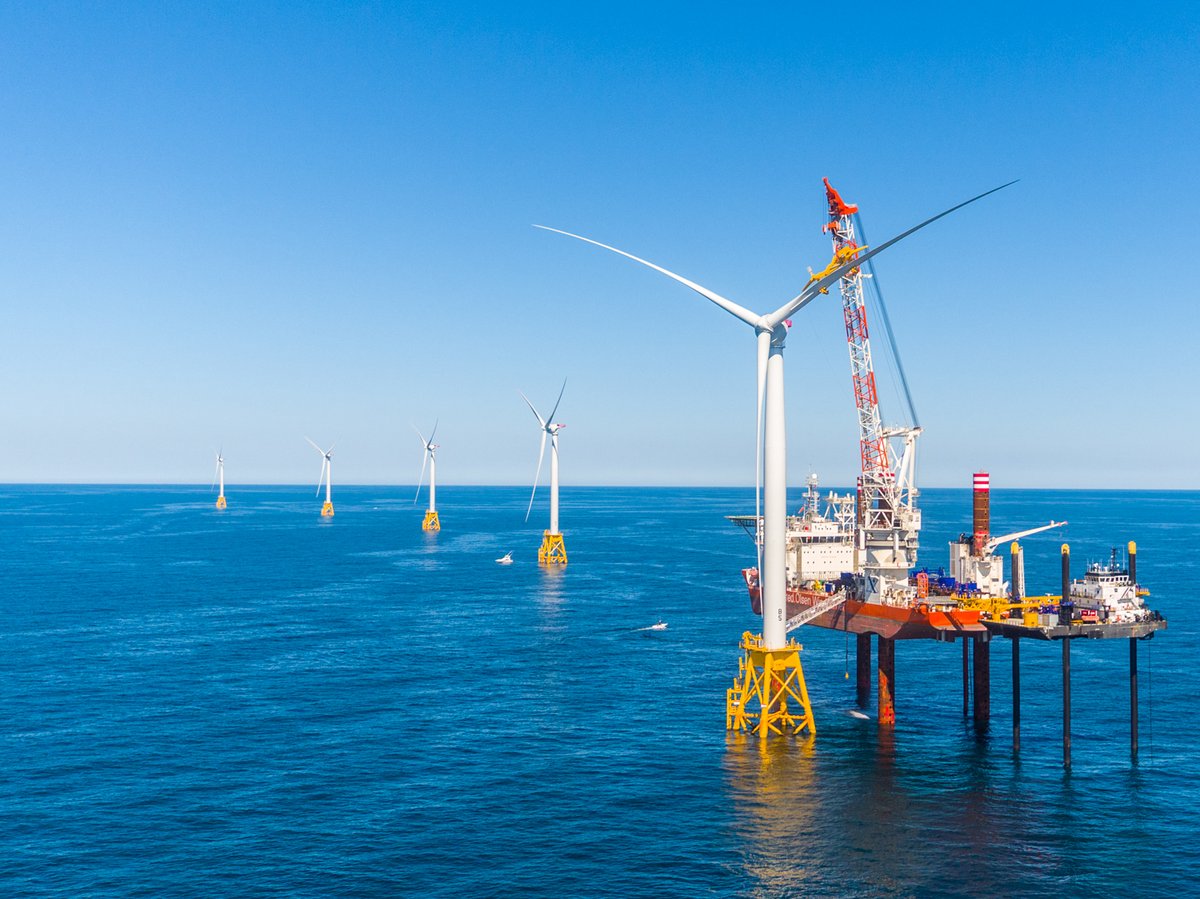A new “national offshore wind energy strategy” document from the federal departments of Energy and Interior outlines 30 actions the government can pursue to enable up to 86 megawatts of at-sea generation by 2050.
The report, following up on a similar 2011 policy document, notes developments in the U.S. wind industry, including declining costs for land-based wind generation, and the new construction of the Deepwater Wind LLC five-turbine, 30-megawatt pilot project in Rhode Island waters.
The 64-page report reflects the Obama administration’s strong support for developing wind power, and was released on the occasion of Energy Secretary Ernest Moniz and Interior Secretary Sally Jewell visiting the DOE-funded Massachusetts Clean Energy Center’s technology test center in Boston, Mass.
The National Ocean Industries Association called the wind report a start, but rebuked the Obama administration’s still-stinging decision earlier this year to drop a Mid-Atlantic oil and natural gas lease sale.
“Unfortunately, the federal regulators are apparently saddled with blinders that provide only a narrow focus for our energy future,” NOIA president Randall Luthi said in a prepared statement, saying the administration had abandoned its “all-of-the-above energy approach in the area.”
“Imagine how many additional jobs, increased economic development and greater energy security could be provided to U.S. consumers and residents all along the Atlantic coast if wind, oil and natural gas were included in the offshore energy development strategy announced today,” Luthi said.
The paper acknowledges environmental issues and potential ocean user conflicts, such spatial needs for maritime traffic and commercial fishing to co-exist with wind farms. More social science is needed on that front, it says.
“DOE’s Lawrence Berkeley National Laboratory is conducting the first national baseline assessment that looks at these factors around the nation with respect to land-based facilities,” the paper notes. “Under this action, DOE plans to conduct similar studies for the first offshore projects in development.
"For example, it will track community responses to these projects longitudinally, from development through operations, to determine the factors that make a project more or less acceptable to affected communities, and begin to suggest development practices that are most likely to create acceptance of and support for offshore wind in locations around the country.”
Wind-generated power is still costly relative to other sources, but the paper notes experience in the northern European offshore industry and U.S. generators in the Plains states show costs coming down.
“Through technology improvements, efficiencies gained through economies of scale, and deployment experience, offshore industry cost models now show credible scenarios for cost reductions below $100 per megawatt-hour at many sites in the United States by the year 2030,” the paper states. “Although the LCOE (levelized cost of energy) for offshore wind in 2015 is still high relative to other, more mature energy sources, this analysis of trends over the next 15 years substantiates possible cost reduction pathways that lead toward economic viability with little or no incentives for some U.S. coastal regions.”
While land-based wind energy generation in the United States has increased nearly 60% since 2011, “much of this renewable generation is located far from coastal load centers, and long-distance transmission infrastructure has not kept pace with this rapid deployment,” the report says. That means offshore wind power looks particularly attractive for urban regions in the Northeast and mid-Atlantic states, close to consistently windy offshore waters where the federal Bureau of Ocean Energy Management is issuing leases to developers.
Even at $100 per megawatt-hour, wind power “has the potential to be competitive in many U.S. regions with relatively high electricity prices,” the report says. Economic modeling shows average costs can go down 5% annually “and by 2030, offshore wind may become competitive in parts of the North Atlantic.”
Recommendations in the paper focus on three areas:
Reducing technical costs and risks, with the Department of Interior proposing joint development of “standard data collection guidelines to foster predictability and inform safe project development.” The Department of Energy will “work to increase annual energy production and reliability of offshore wind plants.”
“Supporting effective stewardship,” with a predictable and transparent regulatory process,” using lessons learned in other countries and the first generation of U.S. projects like Deepwater Wind. That will include measuring impact on marine life, fishing and shipping.
Improving market conditions for investment in offshore wind energy, including how the integrate significant amounts of variable wind generated energy to the broad power grid.




